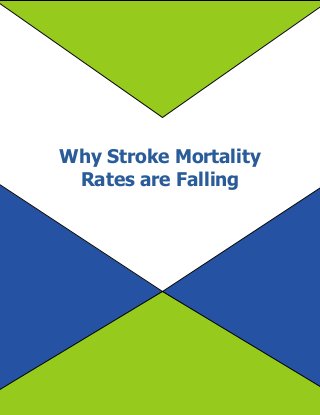Why stroke mortality rates are falling
•
0 gefällt mir•146 views
Melden
Teilen
Melden
Teilen
Downloaden Sie, um offline zu lesen

Empfohlen
Empfohlen
Weitere ähnliche Inhalte
Empfohlen
Empfohlen (20)
Product Design Trends in 2024 | Teenage Engineerings

Product Design Trends in 2024 | Teenage Engineerings
How Race, Age and Gender Shape Attitudes Towards Mental Health

How Race, Age and Gender Shape Attitudes Towards Mental Health
AI Trends in Creative Operations 2024 by Artwork Flow.pdf

AI Trends in Creative Operations 2024 by Artwork Flow.pdf
Content Methodology: A Best Practices Report (Webinar)

Content Methodology: A Best Practices Report (Webinar)
How to Prepare For a Successful Job Search for 2024

How to Prepare For a Successful Job Search for 2024
Social Media Marketing Trends 2024 // The Global Indie Insights

Social Media Marketing Trends 2024 // The Global Indie Insights
Trends In Paid Search: Navigating The Digital Landscape In 2024

Trends In Paid Search: Navigating The Digital Landscape In 2024
5 Public speaking tips from TED - Visualized summary

5 Public speaking tips from TED - Visualized summary
Google's Just Not That Into You: Understanding Core Updates & Search Intent

Google's Just Not That Into You: Understanding Core Updates & Search Intent
The six step guide to practical project management

The six step guide to practical project management
Beginners Guide to TikTok for Search - Rachel Pearson - We are Tilt __ Bright...

Beginners Guide to TikTok for Search - Rachel Pearson - We are Tilt __ Bright...
Why stroke mortality rates are falling
- 1. Why Stroke Mortality Rates are Falling
- 2. Stroke deaths in the United States have been dropping quite dramatically since the early 20th century, according to a recent report published by the American Heart Association/American Stroke Association. Stroke mortality rates from 250 per 100,000 population in 1900 to about 60 per 100,000 by 2000 and 40 per 100,000 population in 2010. The report also says stroke is the fourth-leading cause of death in the U.S. down from its earlier position as the third-leading cause of death. The change in stroke risk and mortality is mainly due to the efforts that physicians are making towards the prevention and treatment of stroke. Measures to Prevent and Treat Stroke Better blood pressure control is cited as the main reason for fall in the incidence of stroke. In addition to better treatment, patient education is also proving helpful. They are instructed on the need to reduce salt intake in the diet. Patient education resources on medical websites provide information on medical concepts, diet control, smoking cessation programs, control of blood pressure and diabetes, and on how to maintain a healthy life style. These education campaigns are also proving very useful patients to recognize disease symptoms and to get treatment at an early stage. According to Dr. Lackland, professor of epidemiology at the Medical University of South Carolina, the decline in stroke deaths is one of the greatest public health achievements of the 20th and 21st centuries. However, there is still a long way to go when it comes to accelerating the decline in stroke mortality rates, says this expert. The hope is that one day; stroke will no longer be even among the top ten causes of death in the US. Even greater focus on with stroke prevention programs and treatment is the key to success and for that health care facilities and physicians should more time to spare for these tasks. With challenges such as EHR implementation, ICD-10 implementation, the Affordable Care Act and changing medical technologies, medical practitioners have enough on their hands already. Outsourcing and crowdsourcing for medical transcription and other non-core healthcare could hold the key to saving more time for the core tasks of patient treatment and care. Reputable companies have professional teams of medical transcriptionists well trained to handle cardiology transcription, radiology transcription, and neurology transcription. By ensuring accurate, timely and secure documentation solutions, a HIPAAcompliant, experienced medical transcription company can prove a worthy partner for any healthcare provider. Contact MTS Transcription Company Main: (800) 670 2809 Fax: (877) 835-5442 E-mail: info@managedoutsource.com
